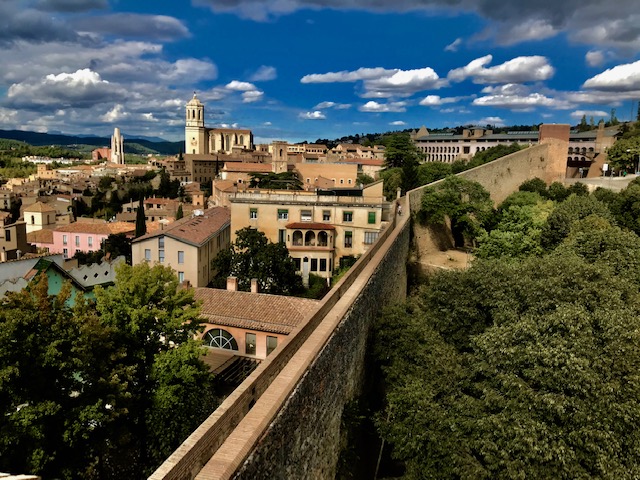It’s there, east of Barcelona. It beckons, a siren song of sunny days and empty roads. Websites praise it, pro cyclists live there, MAMILs visit in bulging Lycra glory.
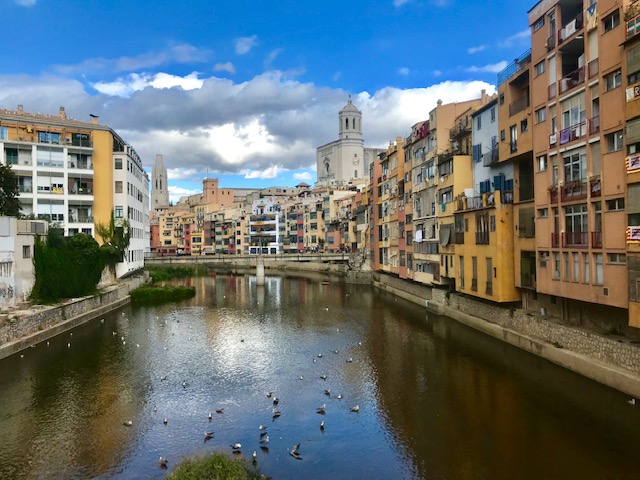
I first visited last year, on a wonderful gravel ride with Thomson. After the tour ended, I stayed in Girona for a few more days, riding with friends I had made on the trip and exploring the city. I loved the place, finding it considerably less touristy than Mallorca (no aging men wearing banana hammocks, draped on beach chairs, slowly roasting in the Mediterranean sun).
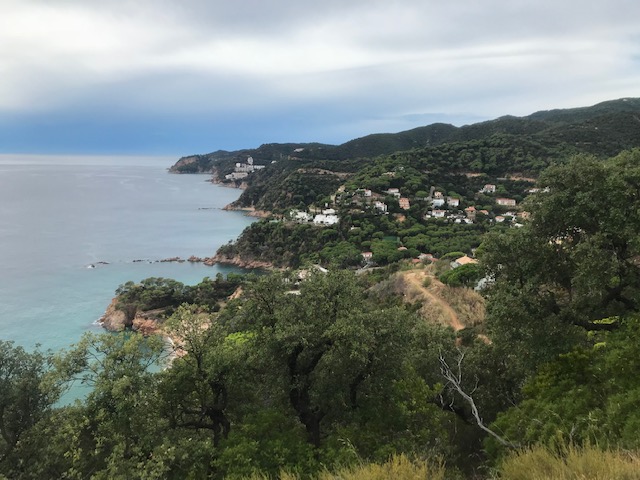
I loved the old city, with its tiny alleys and roads, hidden restaurant gems, and the views from the city wall. The bit of riding I did only served to convince me that there was more to explore, more to ride, and more to eat. I plotted my return.
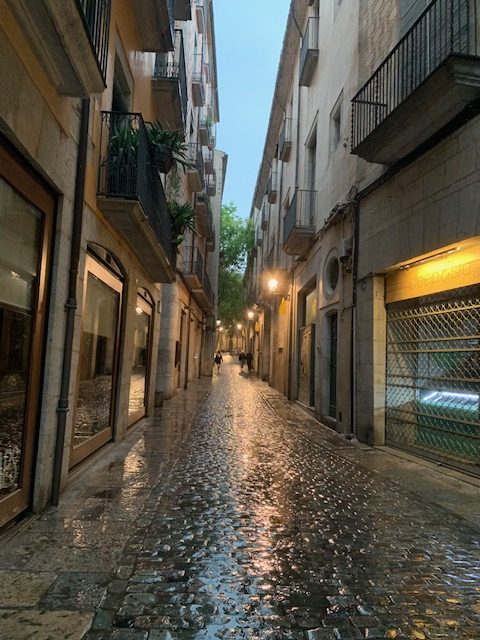
Getting back was easy, really, all things considered. All I had to do was get a part-time job at a regional airline, coordinate that schedule with my ‘real’ job, juggle deadlines, household projects, my son’s activities and schedule, keep my wife happy, feed the cats, wait for winter to end, and cut out a week or so into the calendar so I could return with my bike. No problem.
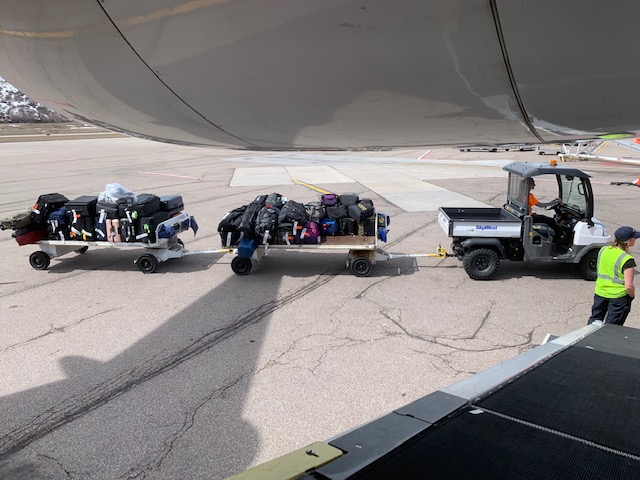
Eventually, much to my surprise, all of those things actually happened. I clocked out of the airport at 7PM, and 10 hours later, I was in Denver getting ready to board my flight to Atlanta and then to Barcelona. Cleverly, for the week before, I had been putting stuff into my small suitcase, and one night, when everyone was asleep, I had packed my bike. Escaping, uh, driving to the airport, was easier than I had anticipated.
My plan was simple: Get to Barcelona el Prat Airport, then go to Sants station and catch the train to Girona, check into my surprisingly inexpensive hotel, put my bike together, and ride. Again, this actually played out pretty much to script, although with a few delays.
First, terminal 1 at el Prat does not have a connection to the commuter train network (more on this later). Second, you have to take 2 separate Metro lines to get to Sants, and third, I timed it poorly and had to sit around Sants for 2 hours waiting for the Girona train. This gave me plenty of time for lunch.
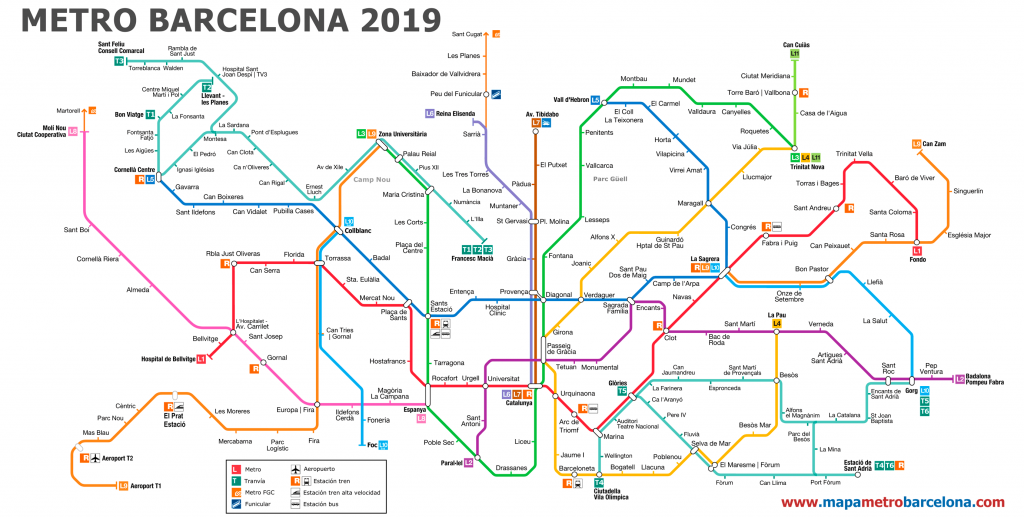
Navigating Barcelona is really easy, particularly with their excellent Metro system. Download the TMB app before you go, it is well worth it. At the airport, buy an Airport Ticket (yes, I know, you’re leaving, but just do it). It costs a bit under 5 Euros. Keep the ticket, you scan it to get in the Metro, and again to get out. I took the L9 line (orange) to Collblanc Station (about 12 stops), then changed to the L5 line (blue) 3 stops to Sants Estacio. Travel time was over 40 minutes. Once off the L5, one flight of stairs up leads to the main part of the station, then off to the ticket window (basically dead center of the building), for a ticket to Girona. High-speed rail costs about 16 Euros. Once on board, it’s a 40 minute trip to Girona station.
One thing that sucks about Google Maps on an iPhone (besides the fact they are probably selling your location data) is that there’s really no scalebar. I draw things for a living; all my drawings have scalebars. I might have a plan in 1/4″=1′-0″, or maybe one that’s 1″=10′, but in either case, I have a visual aide that helps a reader to say, “Oh, that’s about this big.”
Google Maps sort of missed that concept. At first, it looks like Girona Station is way outside of town, but if you start walking towards the river, you can be there in between 5-10 minutes, depending on stride length, suitcase mass, and determination.
After the quick walk to my hotel, I checked in, put my bike together, kitted up, and headed out. My first stop was the Service Course, a most unusual bike shop. It’s been listed on many sites as one of the best bike shops in the world, and it is truly remarkable. They offer bike rentals, have a locker and shower room, have a cool interior design, and have very little product on the shelves. The shop is really more of a Center, offering services and advice, rather than patch kits and gels. I love it.

I walked in the door, in all my MAMILian glory (rounded forms are aero, right?), and asked if they had ride recommendations. They asked what surfaces I was interested in (gravel/pavement), how long I wanted to go for (about 3 hours), and how much climbing I wanted (didn’t care). A few moments looking at their Strava page, and they downloaded a route directly into my Garmin and sent me out the door.
Strava is about a decade old, and millions of people use it. Garmin has made cycling computers for even longer, and the two are ubiquitous in cycling. HOW THE HELL IS THIS THE FIRST TIME I’VE EVER HAD A SHOP SIMPLY SMILE AND INSTALL A .GPX FILE ON MY COMPUTER? Seriously, it’s fucking easy. Plug, click, click, pause, unplug. There. Presto! Satisfied customer.
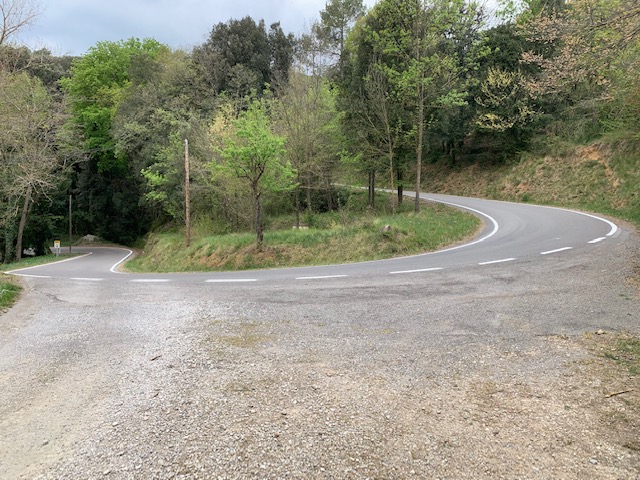
It’s entirely possible they were looking for the most expeditious way to get me to leave the building, something I’m fairly accustomed to. It worked, and moments later I headed through the Placa de la Independencia and my way out of town.
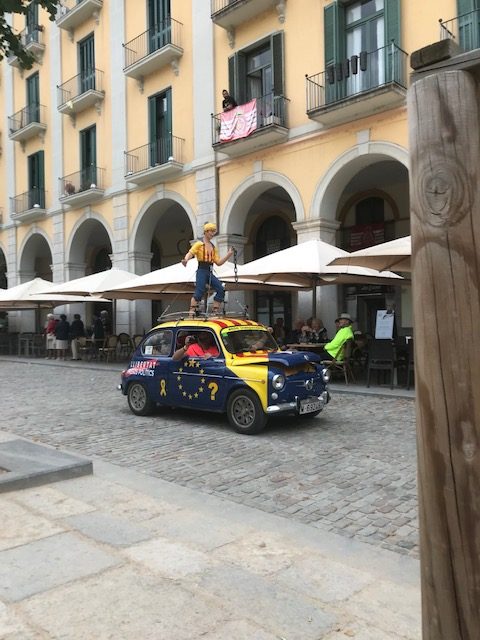
Girona is known for being a road cycling center, home to pros, training camps, and all things skinny tire. What’s easily missed is the gravel- getting off the pavement and onto the dirt is simply amazing. The route provided by The Service Course took me on a counter-clockwise loop north from the city, generally towards Banyoles. The .gpx file did not have notes or tags, so I lost the route a half-dozen times (in metric, I think that’s 5) and had to backtrack and look for the route, but each time I regained it, I was taken to a new amazing segment.
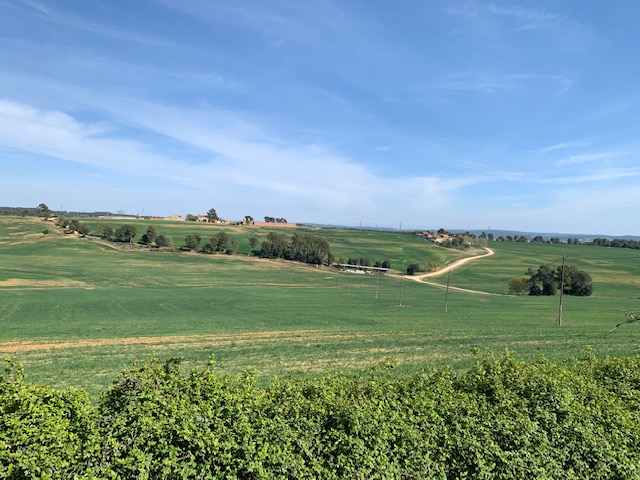
The first hour of the Gravel Bonanza Winter Wrangle course that they selected for me worked its way through farmland, and in many ways, reminded me of riding in Flanders, minus the cobbles. Poppies and other flowers were blooming in waves of color, green grasses reached for spring sun, there was no wind, and even a cramping calf muscle couldn’t erase my grin. Other than places the track crossed major roads, I didn’t see a single car. Come to think of it, I didn’t see a town or store where I could refill my bottles, either.
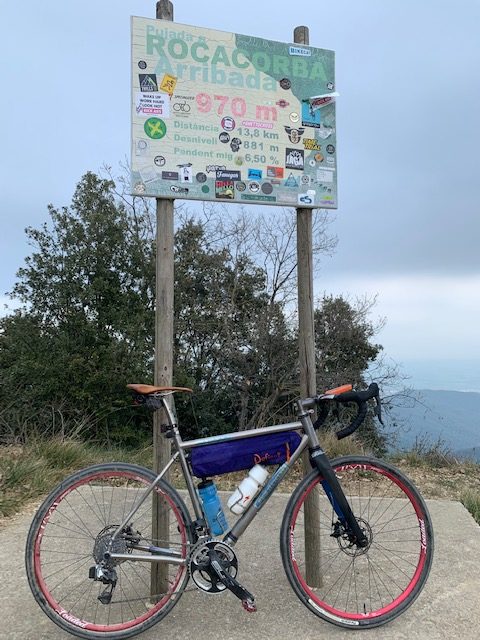
The route swung westwards and up onto some ridgelines, leaving the valley floor behind. It climbed 3 significant ridges on generally smooth but loose-in-spots gravel. My 650b x 42 Panaracer Gravel King tires did their job…adequately. I was running the smooth version, with a wide slick center section and file-tread sides, but in the loose material I was missing my Small Knob Gravel Kings. I didn’t tear out the rear tire on climbs, but much of my descending was drifty, and on one particularly steep and loose pitch, very sketchy. My smile stayed firmly in place, although by the end of the third climb, my bottles were empty and I was ready for my post-ride beer(s).
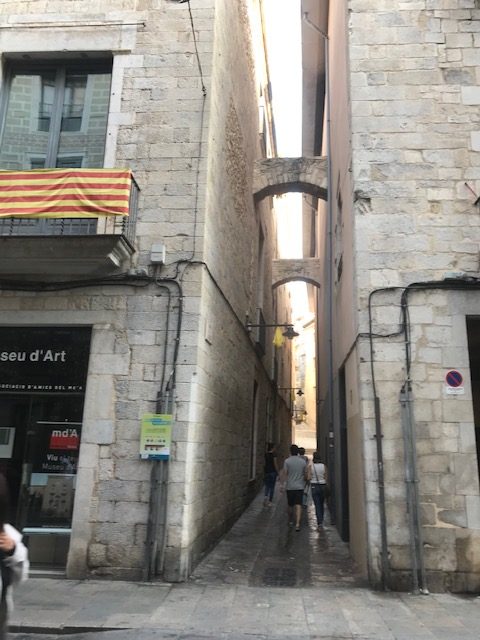
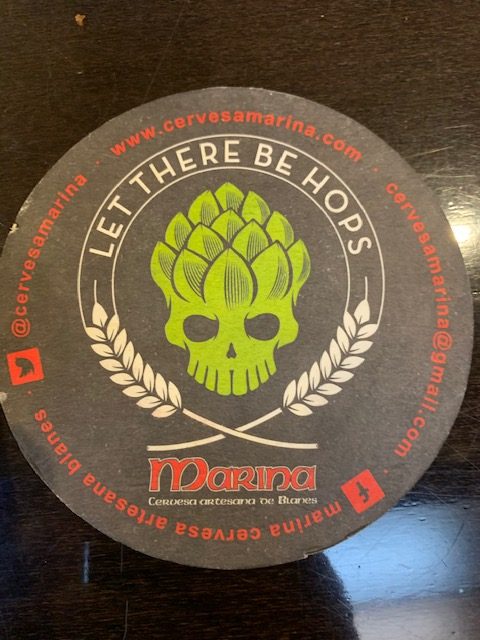
Riding is only part of the allure of Girona. The restaurants that fill the city are universally delicious. Certainly they run the gamut, from touristy tables under umbrellas to cyclist-owned coffee shops. I found a gluten-free bakery, vegan restaurant with a huge beer list, fantastic Basque pintxos, Argentinian empanadas, fresh seafood, and more tapas options than I could imagine. Basically, you will not starve in Girona.
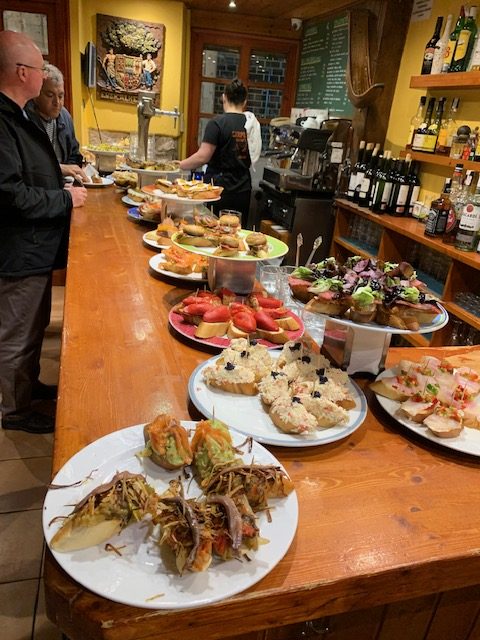
The old city itself is wonderful for wandering and exploring. I found tiny passageways between buildings, a cafe in the middle of a staircase, numerous stores tucked into out-of-the-way corners, and an amazing ancient wall to walk along. Girona has as much wonder in non-cycling activities as it does in the saddle. Post-ride, it’s easy to while away the evening drifting through the old streets and finding bits of magic.
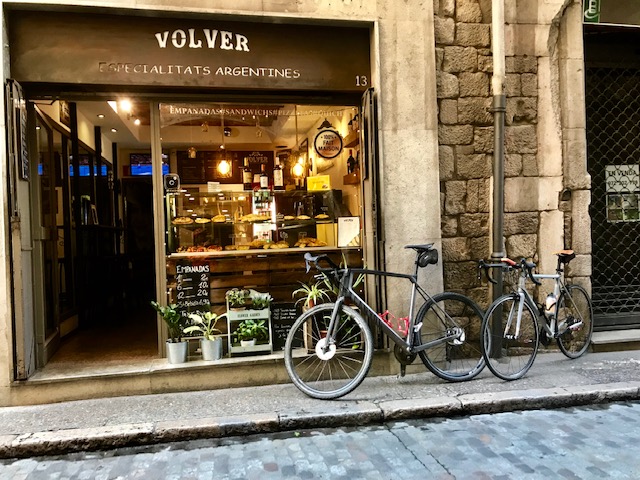
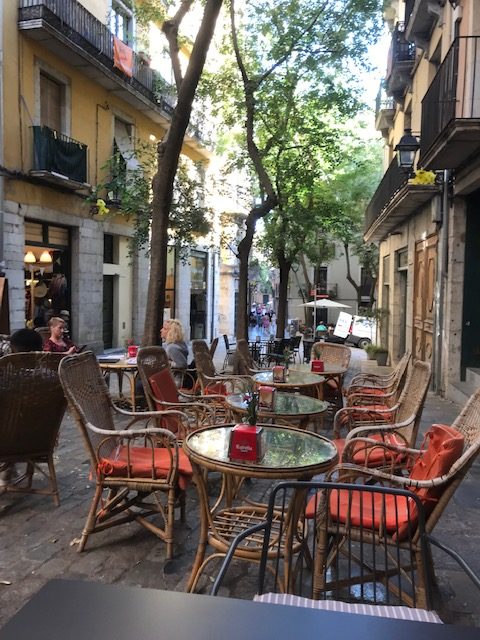
Cross the river to the west, and suddenly you’re in a modern city with boutiques, technology stores, more restaurants, and all the trappings one expects from a vibrant, modern city. This dichotomy between the ancient and modern, separated by the river but joined by a collection of bridges, makes the place more interesting.
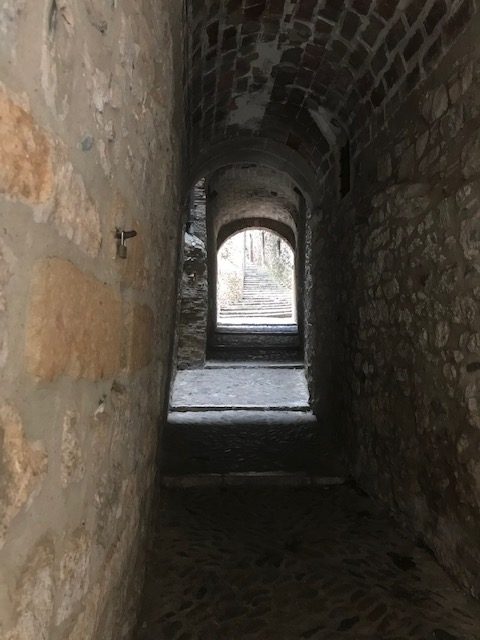
Despite the size of the population and bustle of the city, what’s remarkable from a cyclist’s perspective is how quickly you find yourself on a quiet road. Ignoring the bikeway network that rests on former railbeds, the routes out of town quickly become quiet, with low traffic loads. Even the industrial districts to the north of town seem devoid of cars.
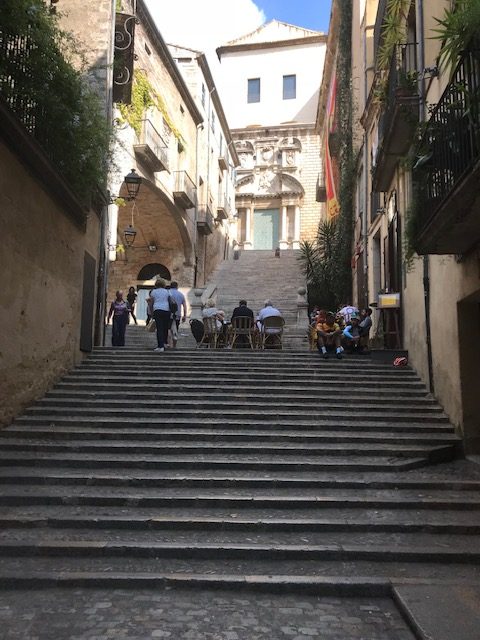
There are untold numbers of routes to ride around Girona, far too many to list here. Shops like The Service Course can help you narrow down your choices. Bike Breaks Girona, another shop on the west side of the river and close to the Pont de Pedra (also called the Stone Bridge and the starting point for many .gpx files) offers free shop rides on Thursdays at 10AM. I joined them, along with close to 40 other people.
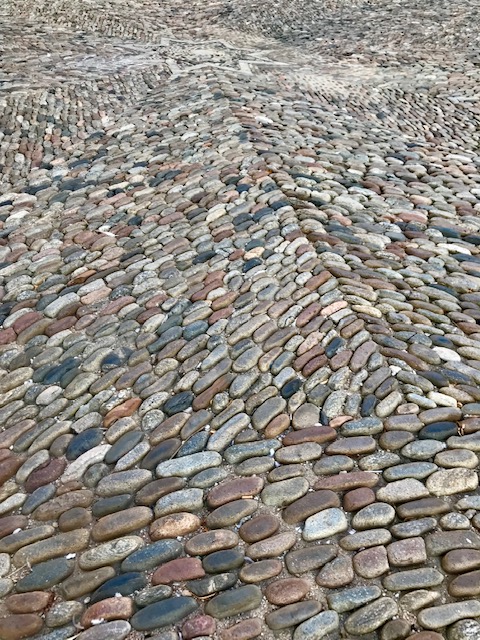
The ride goes for about an hour to a small coffee shop, then splits up into long (100km+), medium (60km+), and short (return to Girona) options. It’s a good way to meet people and get a sample of some of the rides available in the region. I opted for the short version because I had to pack my bike and head back to Barcelona for a morning flight.
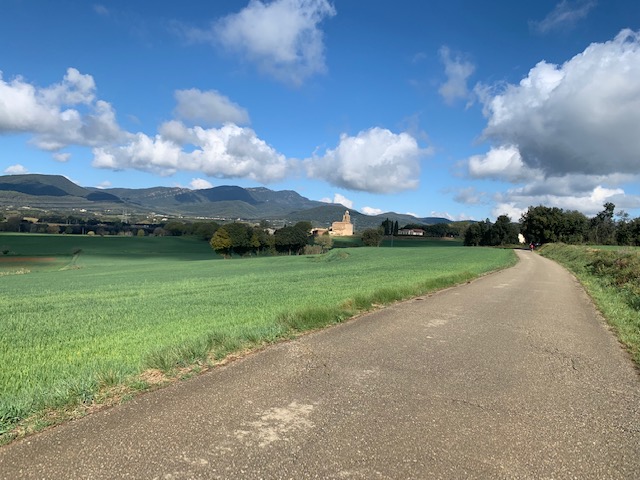
The Service Course offers showers and lockers, and I had dropped my bike case and suitcase off prior to joining the Bike Breaks ride. On my return, they let me shower and pack my bike. I was happy to pay 10 Euros, it made my day much easier. From the shop back to the train station, it’s about a 12-minute walk (10 minutes in metric).
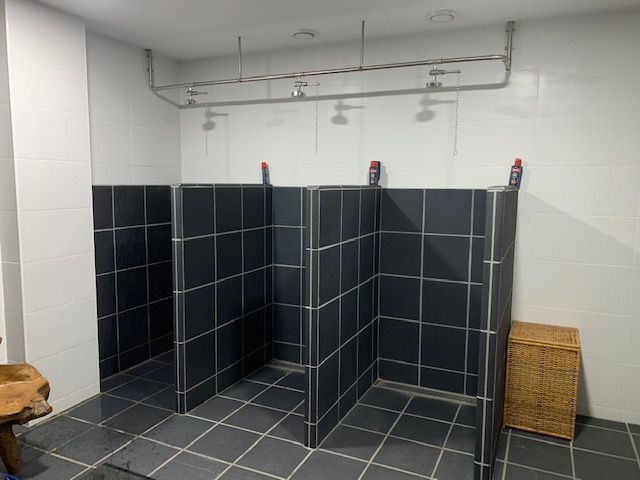
I caught a local train back to Barcelona as the high-speed was going to be later in the day. This slower commuter train was comfortable, about 11 Euros, and took a bit over an hour to get to Sants station, where I had a nearby hotel.
To return to the airport from Sants, there are several options: Metro, commuter rail, bus, and taxi. Having already ridden the Metro on arrival, I was looking for a more direct route, so I opted for the commuter train. This train leaves platform 9 every 30 minutes, and like the Metro, costs under 4 Euros. What I didn’t catch was that it goes to Terminal 2, not Terminal 1, where flights to North America connect.
The train is easy, and only takes about 20 minutes. On exiting, you cross a long pedestrian bridge and following the crowd, turn left into the security checkpoint. I was pretty confused, as it was about 7 in the morning and I had skipped coffee in order to sleep on my long flight to Atlanta. Like a sheep, I had followed along and realized I was in the wrong line. I slid out to the side, backtracked, and found my way downstairs to check-in. I had to walk up and down the concourse a few times to figure out that 1) Delta Airlines was clearly not in the building, and 2) I had no idea where the hell I was.
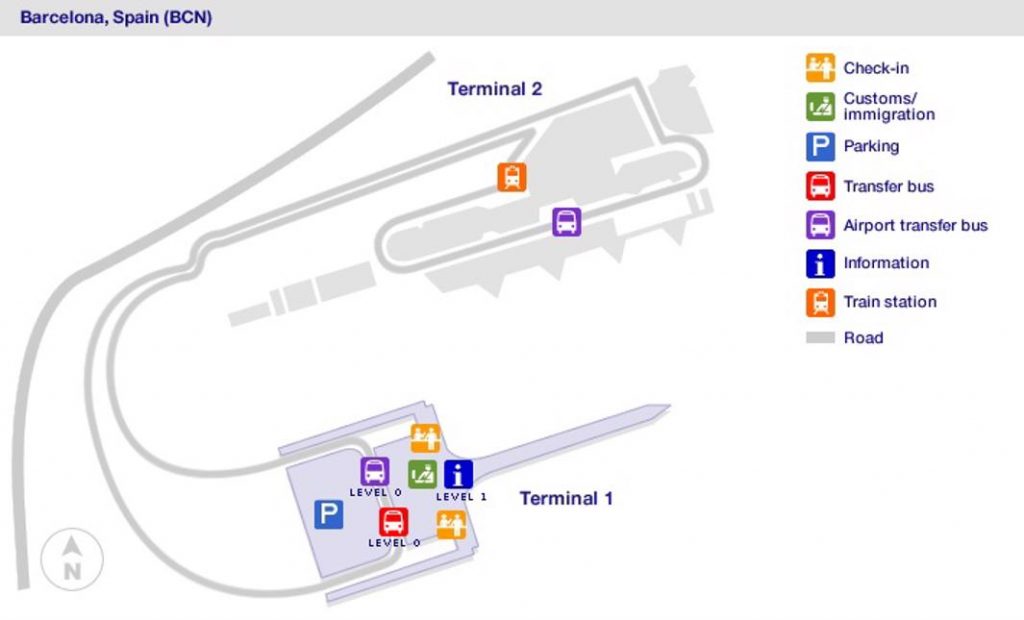
Finally, I noticed a sign pointing to Terminal 1. To change terminals, you go out to the sidewalk and catch a circulator bus. I hopped aboard after a 5 minute wait, and the bus headed off to Terminal 1, which, as it turns out, is far enough away to be on another continent. We left the airport, got on the expressway, and eventually, re-entered the airport. This added 15-20 minutes overall, and in the end, wasn’t much more convenient than had I taken the Metro.
Once inside Terminal 1, I recognized the layout, and bag check, security, and passport control were easy. Once through passports, you are in a small area with one cafe and a large, over-priced duty-free shop.
Girona lives up to its hype. Excellent cycling, dining, loitering, exploring, and vacationing abound in the city and area. An 8-year resident told me she’s still finding new roads to ride. It’s easy to get there (there is a regional airport close to town, but Barcelona is also not a huge effort), it’s mellow and friendly, affordable, and relaxing. I hope to return to Spain soon for more exploration; the hard part is deciding to explore new areas or revisit the ones that are so very good.
